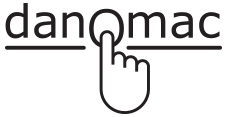How to Use Identity Verification Platforms with Deep Learning And Blockchain Technology

Deep learning has revolutionized the way we detect and identify objects, including faces. It is already powering the most advanced facial recognition technologies in some of today’s most popular consumer applications. When coupled with blockchain technology, it also provides a framework for decentralized identity verification platforms that can be used by anyone anywhere in the world.
This article will describe deep learning and how it’s being used in advanced facial recognition software. Then, it will define blockchain before discussing how both of these technologies are combined to form a decentralized identity verification platform.
An introduction to deep learning
Deep learning is a branch of artificial intelligence wherein computers learn from data and make predictions based on their knowledge. It’s a subset of machine learning, which itself is a broad term used to describe any computer algorithm that can learn from experience to improve its performance over time.
The basic idea behind deep learning is that it can input data into the system, and it will become “smarter” at analyzing and interpreting that data over time.
The role of deep learning in Identity verification platforms
Deep learning is a subset of artificial intelligence (AI) that uses neural networks to solve complex problems. It’s used in everything from facial recognition to image classification and natural language processing, but in identity verification platforms, deep learning plays a pivotal role.
This type of modeling has been used by banks and credit card companies for years now: they see whether or not customers pay their bills on time or open new accounts regularly as indicators of creditworthiness—if they do then they can approve them for larger loans without having to worry about risk factors like income history or employment status.
What is blockchain?
Blockchain is a distributed ledger. It is a database that can be shared across thousands of computers and networks, but it remains unalterable, while being transparent to all users. Blockchain technology uses cryptography to create consensus, validate transactions and protect the integrity of the ledger.
Blockchain technology allows you to create immutable records that cannot be deleted or altered by anyone. This makes it possible for you to track any transaction on a blockchain network in real-time while also protecting your identity from being exposed through data mining techniques such as facial recognition or biometric verification.
Combining blockchain and deep learning for identity verification
Combining these two technologies allows identity verification platforms create an immutable digital record for each person involved in their platform — creating what they call “digital identities” for people who use their service when applying for jobs or financial services like loans or credit cards. These records include things like passport photos and fingerprints; however, because blockchain technology ensures that all records are stored securely across multiple locations at once and cannot be altered without permission from all participants using that network, having your digital fingerprint stored on one server isn’t enough anymore. This means there’s no way anyone could fake another user’s identity without having access.
By combining blockchain and deep learning, identity verification platforms can unlock doors to the future for businesses and consumers alike. No longer do individuals have to worry about losing track of their personal data. Blockchain allows customers to securely transfer their information in a peer-to-peer manner, while deep learning helps IDV platforms verify that the data being transferred is accurate. By integrating these technologies with their own solutions, companies will be able to streamline core business processes and improve the customer experience.






